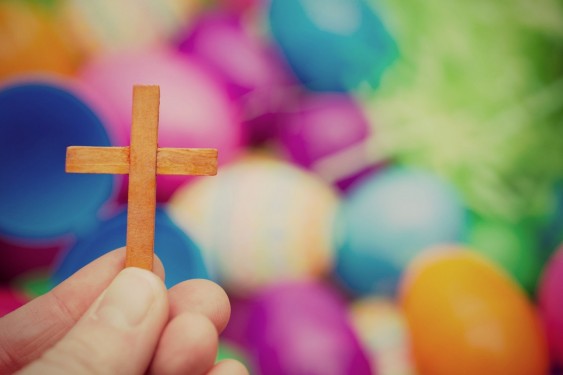
Easter eggs, bunnies, chocolate, and jellybeans—what’s a kid not to love? It’s a fun time to celebrate spring with new outfits, family time, and Easter egg hunts. But like Christmas, the meaning of Easter can quickly get overlooked in commercialism.
Whether or not you are Christian, talking to children about the meaning of Easter can help them learn the history behind this holiday celebrated worldwide. Explaining its background can also help introduce your child to the idea of loss and death. The Easter story tells of hope after a difficult struggle, and that there can be an afterlife for loved ones who have died. If you are not religious, talking about Easter’s meaning can also teach your child about other faiths in the world. Easter is the most important holiday for Christians and is one of the oldest Christian traditions.
The first thing to consider before talking to your child about Easter’s meaning is their developmental age. Children under nine may not handle the details of Jesus’ death and resurrection. Instead, you might start by saying, “Do you know the reason why we celebrate Easter? It’s the day Jesus gave the world an extraordinary gift out of love.”
For children above 9, you might talk more in-depth about Jesus’ death and resurrection, and the new life celebrated during Easter. You can’t tell the whole Easter story without mentioning the cross, but you don’t have to go into explicit detail about his suffering. Instead, focus on the positive aspects of what Jesus’ resurrection means. Gauge what is appropriate for your child and their understanding.
With children of all ages, you can discuss how eggs, bunnies, and baby chicks represent birth and new life. These symbols of Easter celebrate what people can have with God now because of what Jesus went through. Even though he had to be punished in the process, his resurrection gives people a new life after death and displays God’s love, which is why Christians celebrate.
If you’re struggling with explaining the Easter story in your own words, look for children’s books that do it for you. When choosing a book, screen it beforehand to ensure it matches your beliefs, is not too violent, and includes the Christian background of Jesus’ death and resurrection. One option is to use a child-friendly Bible and read the story together. Here are a few more recommendations to help you get started:
- The Berenstain Bears and the Easter Story by Mike Berenstain
- The Berenstain Bears’ Easter Sunday by Mike Berenstain
- What is Easter? by Michelle Medlock Adams
- Good News! It’s Easter! by Glenys Nellist
- An Easter to Remember by Merideth Tullous
Children may have many questions about the story, and it’s essential to listen and respond honestly to what they say. They may ask things like, “Why did Jesus have to die?” or “Why didn’t God help him?” or “How does the Easter bunny fit into all of this?” Even if you don’t know how to answer some of their questions, don’t be afraid to let them know that there are some things you don’t fully understand yourself.
Give them time to process what you are saying. Some children may not have an emotional reaction, others might feel sad about Jesus’ death, and other kids may feel happy with the idea of love and new life. Be sure to validate their emotions and remind them that it’s OK to feel whatever they are feeling.
There are fun activities you can do with your child to teach them the meaning of Easter. You can put messages inside eggs with a small visual for children to find and piece together. In the end, they can read the messages in numerical order to create the full story. You can also find art projects or coloring pages online that make the story engaging and simple to understand.
Talking to your child about the meaning behind Easter may feel intimidating. Still, many online resources like activity pages, books, and craft ideas can help make the conversation a little easier. Easter is about celebrating new beginnings, and you can encourage your child to think about how they want to show love and kindness to others as Easter ends to stay in the spirit of the holiday.
Happy Easter!

Emily currently lives in Orange County, California after spending four years in Illinois and half a year teaching in Florence, Italy. She holds a B.A. in English Literature from Knox College and an M.A. in Counseling from the University of San Diego and has taught English to native speakers and ESL students for over three years. When she’s not working as a School Counselor or writing, she enjoys traveling the world, playing instruments, and blogging about Millennial experiences at Long Live the Twenties.
